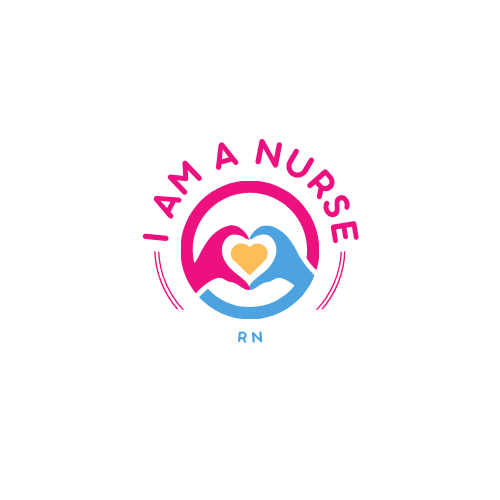In today’s world, the protection and well-being of our children are of utmost importance. As parents, we strive to create a safe environment by childproofing our homes and taking various precautions. However, there are still misconceptions surrounding routine childhood vaccinations that can hinder the best healthcare for our children. It is crucial to separate fact from fiction when it comes to vaccines. Vaccines have been one of the greatest public health achievements, eradicating diseases like smallpox and polio, and significantly reducing the prevalence of infectious diseases such as measles, diphtheria, and whooping cough.
Myth: Vaccines contain harmful chemicals
One common myth is that vaccines contain harmful chemicals. While it is true that vaccines may contain ingredients like aluminum and formaldehyde, these substances are present in minuscule amounts that pose no harm. It is important to remember that any chemical, including water, can be harmful if consumed in excess. Vaccines are carefully formulated to be safe and effective, and the levels of these substances are well within the acceptable range. Just as we do not worry about water intoxication when giving our children water, we should not worry about the ingredients in vaccines.
Myth: Natural immunity is better than vaccine immunity
Some parents believe that natural immunity, acquired through contracting a disease, is superior to vaccine-induced immunity. While it is true that natural infection can provide some level of protection, it comes at a cost. Diseases like measles can have severe consequences, including death, intellectual disabilities, and other lifelong complications. Vaccines, on the other hand, provide a safe and controlled way to stimulate the immune system’s response without exposing children to the risks associated with the actual disease. By vaccinating our children, we can protect them from potentially devastating health outcomes.
Myth: Vaccines cause autism
The myth linking vaccines, particularly the measles, mumps, and rubella (MMR) vaccine, to autism has been widely debunked. Although a study published in The Lancet in 1998 suggested a connection, it was later retracted due to significant flaws and fraudulent data. Numerous studies have since been conducted, and none have found a causal link between vaccines and autism. The Centers for Disease Control and Prevention (CDC) estimate that about 1 in every 44 children is diagnosed with autism spectrum disorder, regardless of vaccination status. Vaccines are not responsible for the rise in autism diagnoses.
Myth: Vaccines can spread disease
There is a misconception that vaccines can actually cause the diseases they are designed to prevent. This is not true. Vaccines contain either dead or weakened forms of the virus or bacteria, or parts of the pathogen that trigger an immune response. They do not contain the active form of the disease and cannot cause the illness. Vaccines provide the immune system with important information about the disease, enabling the body to recognize and fight off the actual pathogen if exposed to it in the future. By vaccinating our children, we are empowering their immune system to mount a swift and effective defense against potential threats.
The Importance of Childhood Vaccinations
Childhood vaccinations play a vital role in protecting children and the wider community from preventable diseases. Vaccines have been proven to be safe and effective through extensive research, and they have saved countless lives and prevented millions of hospitalizations. It is essential to ensure that children receive the recommended vaccinations according to the immunization schedule provided by healthcare professionals. Vaccines not only protect individual children but also contribute to the concept of herd immunity, where a significant portion of the population is immunized, reducing the overall spread of infectious diseases.
The Measles Outbreaks
Recent measles outbreaks in various parts of the United States highlight the importance of vaccination. In Oregon and Washington, an outbreak centered around Portland has resulted in numerous infections, primarily among unvaccinated individuals. Similarly, New York and Texas have also experienced outbreaks, emphasizing the need for widespread vaccination to prevent the resurgence of vaccine-preventable diseases. These outbreaks serve as a reminder that when vaccination rates decline, the risk of disease transmission increases, putting vulnerable individuals, such as infants too young to be immunized and individuals with compromised immune systems, at risk.
The Role of Vaccines in Disease Prevention
Vaccines work by stimulating the immune system to recognize and fight off specific diseases. Each vaccine contains either a dead or weakened form of the virus or bacteria, or specific parts of the pathogen. When administered, vaccines prompt the immune system to produce an immune response, including the production of antibodies that recognize and neutralize the pathogen. This immune response provides long-term protection, known as immunity, against future exposures to the disease-causing agent.
Vaccines have been instrumental in eradicating or significantly reducing the prevalence of once-common diseases. Diseases like smallpox, which caused widespread devastation, have been eradicated due to global vaccination efforts. Polio, which once paralyzed thousands of children annually, has been eliminated from many parts of the world through vaccination campaigns. Other diseases, such as measles, mumps, rubella, diphtheria, and whooping cough, have become rare due to high vaccination rates.
Vaccine Safety
The safety of vaccines is a priority and is rigorously monitored by regulatory agencies. Before a vaccine is approved for use, it undergoes extensive testing and evaluation to ensure its safety and efficacy. The U.S. Food and Drug Administration (FDA) sets strict guidelines for vaccine development and closely monitors the manufacturing processes and quality control of vaccines.
Vaccine safety monitoring continues even after a vaccine is licensed and distributed. The CDC and other organizations actively monitor vaccine safety and investigate any reported adverse events. The Vaccine Adverse Event Reporting System (VAERS) allows healthcare providers and the public to report any adverse events following vaccination, providing valuable data for ongoing safety evaluations.
Serious side effects from vaccines are rare, while the benefits of vaccination far outweigh the risks. It is essential to discuss any concerns about vaccine safety with healthcare providers who can provide accurate information and address any misconceptions.
Vaccine Hesitancy and Its Impacts
Despite the overwhelming evidence supporting the safety and efficacy of vaccines, vaccine hesitancy has emerged as a significant challenge. Vaccine hesitancy refers to the reluctance or refusal to vaccinate despite the availability of vaccines. This hesitancy can be driven by various factors, including misinformation, distrust in healthcare systems, religious or philosophical beliefs, and concerns about vaccine safety.
Vaccine hesitancy poses risks not only to unvaccinated individuals but also to the broader community. When vaccination rates decline, herd immunity can be compromised, allowing diseases to resurge and spread more easily. This puts vulnerable populations, such as infants, elderly individuals, and those with weakened immune systems, at greater risk of severe illness or complications.
Addressing vaccine hesitancy requires a multifaceted approach that includes education, open communication, and fostering trust in healthcare providers and scientific evidence. Healthcare professionals play a crucial role in dispelling myths, providing accurate information, and engaging in open dialogue with hesitant individuals and families.
The Immunization Schedule
The CDC provides a recommended immunization schedule for children, outlining the vaccines and the ages at which they should be administered. Following the recommended schedule ensures that children receive the necessary protection at the optimal times when they are most vulnerable to specific diseases.
The immunization schedule is based on extensive research and takes into account factors such as disease prevalence, vaccine effectiveness, and the development of a child’s immune system. Vaccines are carefully timed to provide maximum protection and to ensure that children develop immunity when they are most susceptible to severe complications from certain diseases.
Parents and caregivers should consult with their healthcare providers to ensure that their children are up-to-date with the recommended vaccines. Missed or delayed vaccinations can leave children vulnerable to vaccine-preventable diseases, especially during outbreaks or when traveling to areas with higher disease prevalence.
Common Vaccine Myths Debunked
Myth: Vaccines contain harmful chemicals
One prevalent myth is that vaccines contain harmful chemicals that can be detrimental to children’s health. While it is true that vaccines may contain trace amounts of certain substances, such as aluminum or formaldehyde, these quantities are well below the levels that can cause harm. These ingredients are used to enhance the effectiveness and stability of vaccines. The safety of vaccine ingredients has been extensively studied and confirmed by scientific research.
It is important to remember that we are exposed to various chemicals in our daily lives, and the levels found in vaccines are negligible compared to other sources. Vaccines undergo rigorous testing and are subject to stringent quality control measures to ensure their safety and efficacy.
Myth: Natural immunity is better than vaccine immunity
Some individuals believe that natural immunity acquired through exposure to a disease is superior to immunity conferred by vaccines. While natural infection can provide some level of protection, it comes at a significant cost. Diseases like measles, mumps, or whooping cough can result in severe complications, including hospitalization, permanent disabilities, or even death. Vaccines offer a safe and controlled way to stimulate the immune system without exposing individuals to the risks associated with the actual diseases.
Vaccine-induced immunity is carefully designed to mimic natural infection, triggering the body’s immune response to produce antibodies and memory cells that provide long-lasting protection. Vaccines have been proven to be effective in preventing the spread of infectious diseases and reducing the severity of illness if breakthrough infections occur.
Myth: Vaccines cause autism
The debunked myth linking vaccines, particularly the MMR vaccine, to autism continues to persist despite overwhelming scientific evidence to the contrary. The original study that suggested a connection between vaccines and autism has been retracted due to fraudulent data and flawed methodology. Numerous subsequent studies involving large populations have found no evidence of a causal link between vaccines and autism.
Autism is a complex neurodevelopmental disorder with a strong genetic component. The onset of autism typically occurs around the same age that children receive their routine vaccinations, leading some to mistakenly associate the two. However, extensive research has consistently shown that vaccines do not cause autism. The benefits of vaccination in preventing serious diseases far outweigh any unsubstantiated concerns about autism.
Myth: Vaccines can spread disease
Another common myth is that vaccines can actually cause the diseases they are intended to prevent. This misconception stems from a misunderstanding of how vaccines work. Vaccines contain either inactive or weakened forms of the pathogens or specific components that trigger an immune response. They do not contain the complete and active form of the disease-causing agent.
Vaccines provide the immune system with a blueprint of the pathogen, allowing it to recognize and mount a defense against the actual disease. The immune response generated by vaccines is specific to the targeted pathogen and does not replicate the full range of symptoms associated with natural infection.
It is important to note that vaccines undergo rigorous testing and monitoring to ensure their safety and efficacy. The risks associated with vaccine-preventable diseases far outweigh any potential risks posed by vaccines themselves.
Conclusion
Childhood vaccinations are a cornerstone of public health, protecting children from preventable diseases and contributing to the overall well-being of communities. Vaccines have been extensively researched, proven to be safe and effective, and have saved countless lives. It is essential for parents and caregivers to understand the facts about vaccines and dispel any misconceptions or myths.
Vaccines do not contain harmful chemicals in quantities that pose a risk to children’s health. Natural immunity acquired through disease exposure comes at a significant cost, whereas vaccine-induced immunity provides protection without the associated risks. Vaccines do not cause autism, and extensive research has consistently debunked this myth. Furthermore, vaccines cannot spread disease as they do not contain the active form of the pathogens they target.
By adhering to the recommended immunization schedule and ensuring that children receive all recommended vaccines, we can protect our children and contribute to the collective effort to eliminate vaccine-preventable diseases. It is crucial to consult with healthcare professionals, who can provide accurate information, address concerns, and help make informed decisions regarding vaccinations.
Let us prioritize the health and well-being of our children by embracing the proven benefits of childhood vaccinations. Together, we can ensure a healthier future for our communities.




